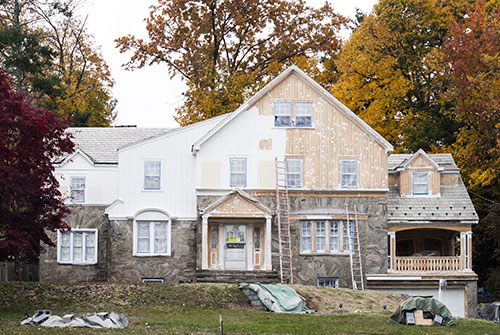 Did you know that you need to paint your home’s exterior every five years in Arizona? If you wait longer than that, the relentless desert sun and rains will eat the wood and stucco.
Did you know that you need to paint your home’s exterior every five years in Arizona? If you wait longer than that, the relentless desert sun and rains will eat the wood and stucco.
How often do you paint the exterior of your house? The answer depends on a few variables such as location, supplies, quality, preparation, etc.
Our article takes you through the lifespan of a paint job, factors affecting the durability, appropriate temperature, and weather.
How Long Does Exterior Paint Last?
Exterior paint can last between 5 – 10 years, depending on the surface preparation, type of paint, and the surrounding environment.
Above all, the longevity varies contingent on the surface.
- Brick: 8 – 17 years
- Stucco: 5 – 12 years
- Wood Siding: 3 – 7 years
- Aluminum Siding: 20 years
- Mixed Materials: 7 – 12 years
Wood is the first to degrade, followed by stucco and brick. Aluminum and vinyl siding can last a long time.
Factors Affecting the Durability of an Exterior Paint Job
Certain factors influence the lifespan and the durability of exterior paint jobs. The most important of them is surface preparation. Before painting the home’s exterior, clean the siding free of debris and scrape of the peeling paint. Make sure that the surface is dry before you apply the paint.
Here’s a quick look at those factors:
Elements – The weather conditions and climate have a significant impact on your paint job and its longevity. Paint tends to bubble in direct sunlight, so it can peel away quickly if exposed for a long time. The same goes with high humidity, frigid winters, storms, etc. In such conditions, your paint could fail sooner.
Maintenance – Accumulation of dirt and moss can break down the paint. Regular inspection and maintenance can help identify problem areas such as dampness, mold, and rot. Ensure that you pressure wash the home’s exterior every year or so. Regular washing frees your home from contaminants and helps the paint last longer.
Previous Paint Job – Generally, high-quality paint in lighter shades and multiple coats will last a long time. Surfaces that have been adequately prepped and primed also tend to have a strong bond with the paint.
Suitable Exterior Paint – The choice of paint can largely impact the durability of the project. 100% acrylic paints are the best choice for exteriors and tend to outlive other paints.
Type of Wood – The type of wood used in siding also impacts the paint job. Softwood like cedar and pine tend more vulnerable to rot and damage than hardwoods like oak or pine.
What Type of Paint is Best for the House Exterior?
The type of paint you use for your home is not just about aesthetics. But also how it performs on the surface:
Satin/Egg Shell has a low reflective finish and hides the surface imperfections better than the other types. Rather than be completely flat like matte paints, they have a slight gloss. This makes it easier to wash and also manages the abrasion better. It works best for sidings.
Semigloss is ideal for trim in window sills. They are durable and moisture resistant hence easy to clean. They work better for surfaces that face the brunt of the climate.
Highgloss is best for shutters, doors, and surfaces that face the day to day abuse. The formula is rich in resin hence resilient and dirt-repellent than other formulas. While the gloss adds to the richness and depth of the paint, it also magnifies all the imperfections, thus requiring a skillful application.
Recommended Temperatures to Paint the Exterior of a House
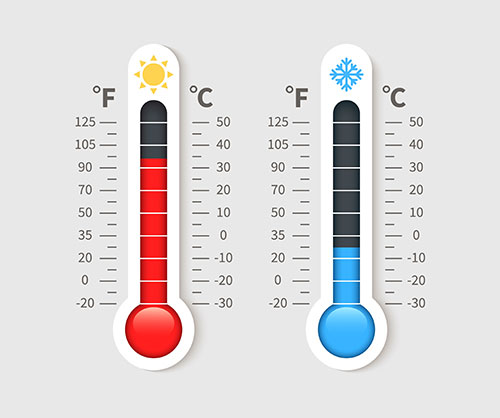 The recommended temperatures ideal for exterior painting depends on the paint (oil-based or acrylic, or latex) and the brand.
The recommended temperatures ideal for exterior painting depends on the paint (oil-based or acrylic, or latex) and the brand.
- Oil-based Paint: 40 – 90 °F (4.44 – 32.22 °C)
- Acrylic and Latex Paint: 50 – 85 °F (10 – 29.44 °C)
And the humidity should be between 40% to 70% for the paint to dry properly.
Wrong temperatures can prevent the paint from binding, which then leads to cracking and peeling.
Time Taken to Paint the Exterior of a House
The time taken to paint a house depends on the size and also the number of painters involved. It takes a team of two to three people about three to four days to paint an average-sized home with four or fewer bedrooms and 1-2 stories.
A three-story large home with five or more bedrooms will take five to six days.
Influence of Weather in Exterior Painting
Weather can wreak havoc on the painting project. Everything from the temperature, the sun, and rain can impact your paint job if not appropriately planned.
A cold climate can delay the drying process while the sun can speeding up the drying process creating lap marks. Wind, on the other hand, can blow dust onto the wet surface. You can face drying issues with humidity and rain too.
The ideal conditions for exterior painting are mild temperatures, low humidity, and little to no wind.
Maintaining Exterior House Paint
Maintenance is as essential as the painting process itself, perhaps even more so. Not only does your home look good, but it also extends the life of your exterior house paint.
Here are a few maintenance activities:
Washing your home gets rids of contaminants like dirt, mold, mildew, air pollutants, etc., before start harming your painting. Use a soft-bristled brush with a long handle and a soapy solution to lightly scrub and rinse it off. For mold and mildew issues, add bleach to the solution.
Another option is power washing which, when used correctly, produces the best results. A power washer does all the above but is better handled by a professional.
Paint deteriorates at a different speed depending on the materials. So, you may have to paint certain areas far earlier than others.
Touch up your painting as a part of your maintenance activity. Few hours of painting activity can add years to your exterior.
- Repair Gutters and Downspouts:
Gutters and downspouts can channel the water away from your home and ensure that your home is protected. Neglected gutters can collect debris and overflow, causing damage to the exterior.
Inspect your gutters at the start of every winter and ensure that they are free-flowing.
Point your sprinklers away from the siding of your home and prevent them from getting wet. This promotes the growth of mold and mildew. Trim the bushes around your home so that the exterior siding gets airflow and sunlight.
Have a painting contractor check for cracks and refresh your caulking every year.
Ensure that you refresh the waterproof coating every year if your wood is not painted.
Tips to Extend the Lifespan of Exterior Paint Job
 If you are about to get your home painted, you are sure to wonder how long the paint will last. By following the below tips, you can make sure that the paint job can last at least ten years or maybe even more.
If you are about to get your home painted, you are sure to wonder how long the paint will last. By following the below tips, you can make sure that the paint job can last at least ten years or maybe even more.
Surface Preparation: Cleaning and preparing the surface is often the most overlooked part of the house painting process. Use a power washer to clean the contaminants, peeling paint, dirt, and mold from the surface of the exterior.
Primer: Primer acts like a base coat and helps the paint adhere, giving a smooth look and fewer imperfections. It also prevents bubbling, flaking, or chipping.
High-Quality Paint: A high-quality paint will last longer, not fade and provide better adhesion. It has more concentrated pigment making the walls appear brighter and shinier.
Avoid Direct Sunlight: Paint in shaded surfaces; Direct sunlight can increase the drying process leaving it uneven.
Temperature: The paint better adheres when the weather is between 55-80 degrees. Spring and fall make for good painting since the days aren’t that hot.
Maintenance: To make the walls appear freshly painted throughout the year, ensure that you perform regular maintenance at least once a year.
Exterior Paint: Which Type Lasts the Longest?
Acrylic Paint lasts the longest of all and is the best choice for exterior painting since they resist the damage caused by natural elements. It is known for retaining its color pigment without fading even in extreme weather conditions.
Hence, acrylic is the paint of choice for homes in hot climates.
Exterior Painting: Oil-based Paint vs. Latex Paint
Oil-based paints have always been the standard for exterior paint jobs but not so much now after the introduction of acrylic. Latex, on the other hand, is water-based.
Water-based paints like latex have a shorter drying time and fewer VOC emissions. They also provide better coverage and easier cleanup. Furthermore, they have better adhesion and can be used in temperatures as low as 35 degrees Fahrenheit.
On the other hand, oil-based paint dries slower but to a smoother glossier and better-painted finish than its counterpart. It is more resistant to scratches, staining, etc.
When compared to water-based paint, it has more body and requires fewer coats of paint. When compared side by side, the oil-based paint looks better but better handled by a professional painter.
Exterior House Painting Rules
No matter if you do the exterior paint job yourself or hire a painter, you may want to follow the below rule to get the project done right:
- Use quality material from paint, primer to caulk.
- Surface preparation is mandatory.
- Apply more than one coat of paint.
- Wait for the suitable climatic condition.
- Cover your deck, garden, patio, and everything else with drop cloths to protect them from spills.
Conclusion
The lifespan of the exterior painting job depends on environmental factors, products, number of coats, primer, etc.
Proper maintenance, surface preparation, primer, and quality paint are the critical components of a successful paint job.
Exterior house painting is a pretty big job. It takes more than 120 person-hours to paint an average-sized home. While it may cost more, it is better to hire the services of a skilled house painter. Contact a painting contractor for a free estimate before you start the paint job. Also, ask for references from two or more customers and check their workmanship if possible.
 Here at Wiese Painting, we are experienced with painting all colors, be it your apartment, home, or office. We guarantee that any hard-to-paint color or surface is tackled with professionalism and tricks that have been acquired through years of painting. You will love the look of your freshly-painted home, so contact us today for your free quote!
Here at Wiese Painting, we are experienced with painting all colors, be it your apartment, home, or office. We guarantee that any hard-to-paint color or surface is tackled with professionalism and tricks that have been acquired through years of painting. You will love the look of your freshly-painted home, so contact us today for your free quote!
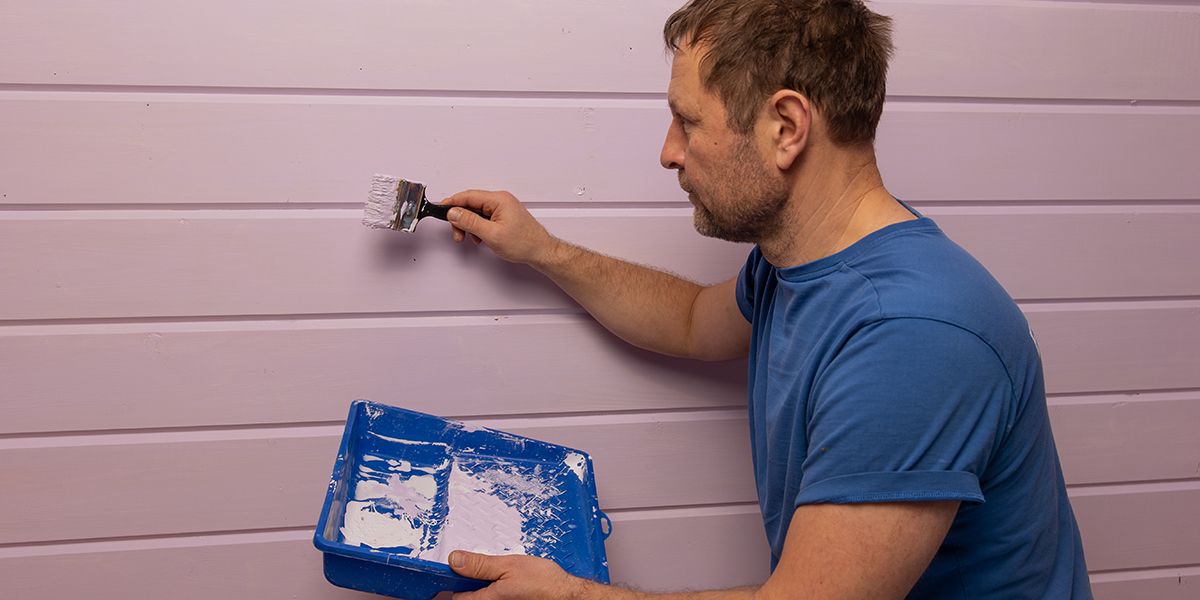
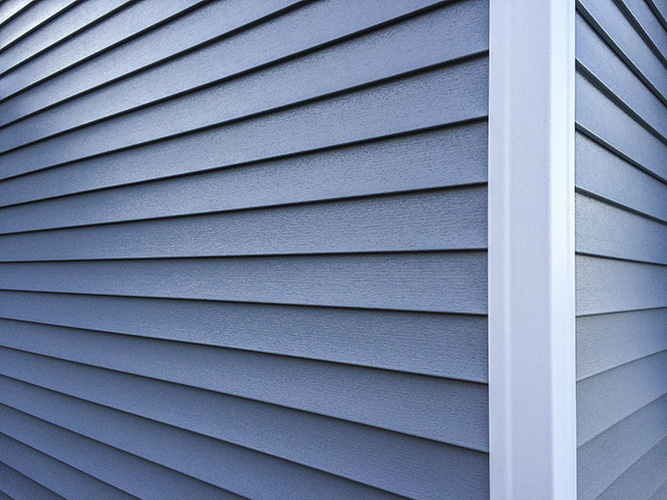 Vinyl siding is a hardened, durable plastic wrapping for your home used for waterproofing and aesthetic reasons. They are low maintenance and can last as long as 40 years if cared for properly.
Vinyl siding is a hardened, durable plastic wrapping for your home used for waterproofing and aesthetic reasons. They are low maintenance and can last as long as 40 years if cared for properly.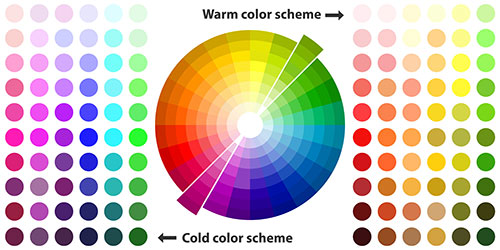 Autumn Red
Autumn Red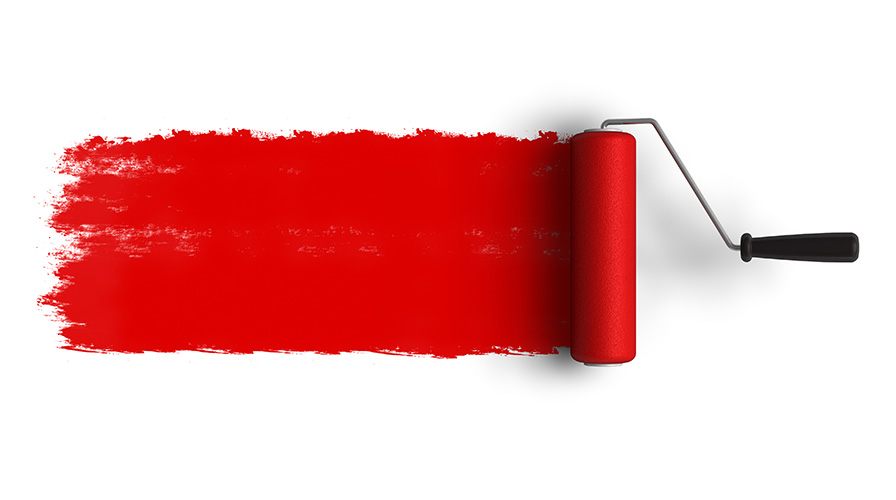 Step #6: Apply the Paint
Step #6: Apply the Paint Here at
Here at  Did you know that you need to
Did you know that you need to  The
The  If you are about to get your home painted, you are sure to wonder how long the paint will last. By following the below
If you are about to get your home painted, you are sure to wonder how long the paint will last. By following the below 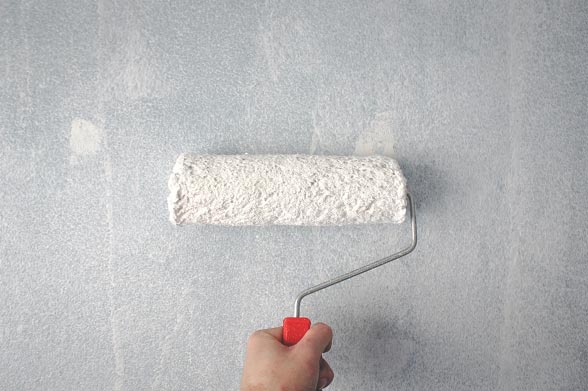
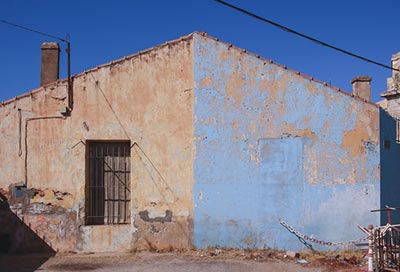 Exterior paint is one of the easiest ways to improve your home’s perceived value, with no major renovations required. Whether you just moved into a new home or are tired of the current exterior paint job on your house, choosing the best time to paint house exterior is very important to ensure that you get the desired results. There are several variables that impact the finish of your paint job over time.
Exterior paint is one of the easiest ways to improve your home’s perceived value, with no major renovations required. Whether you just moved into a new home or are tired of the current exterior paint job on your house, choosing the best time to paint house exterior is very important to ensure that you get the desired results. There are several variables that impact the finish of your paint job over time.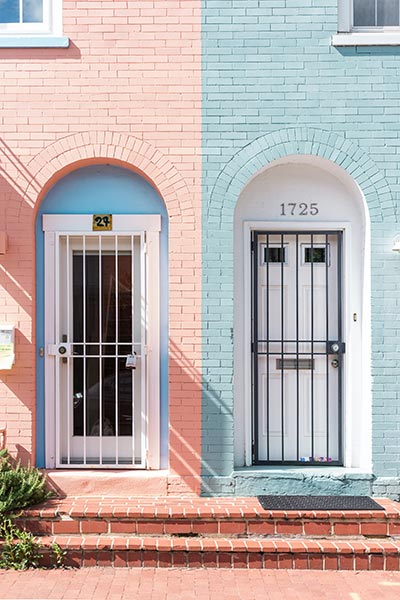 Your home’s exterior appearance is the first thing people see when visiting your property. Thus, it’s important to maintain a good-looking outer appearance to home so that it’s perceived value can be sustained not only for resale purposes but also for your own benefits. Over time, variables such as extreme heat, adverse weather conditions, dirt accumulation, and more will begin to impact your exterior paint job’s quality & finish over time.
Your home’s exterior appearance is the first thing people see when visiting your property. Thus, it’s important to maintain a good-looking outer appearance to home so that it’s perceived value can be sustained not only for resale purposes but also for your own benefits. Over time, variables such as extreme heat, adverse weather conditions, dirt accumulation, and more will begin to impact your exterior paint job’s quality & finish over time.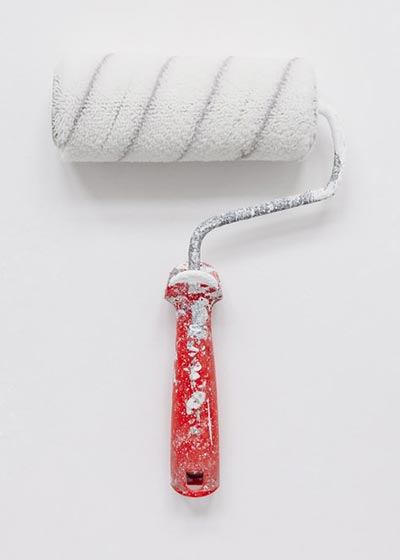 If you’re thinking about selling your home anytime soon, chances are you’re also trying to find innovative ways to increase its curb appeal before listing it on the market. Well, the good news is that there is one very simple and straightforward way to improve the perceived value of your home while also attracting buyers through design. Paint can be used as a tool to boost your home’s curb appeal, which could result in it selling fast than anticipated, which is more good news for you.
If you’re thinking about selling your home anytime soon, chances are you’re also trying to find innovative ways to increase its curb appeal before listing it on the market. Well, the good news is that there is one very simple and straightforward way to improve the perceived value of your home while also attracting buyers through design. Paint can be used as a tool to boost your home’s curb appeal, which could result in it selling fast than anticipated, which is more good news for you.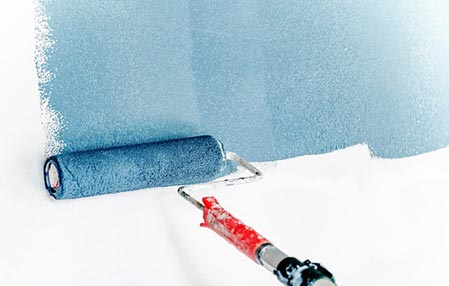 When it comes to choosing the right color for your home, making a decision about whether you should paint it all one color or use different shades and tones to create a unique expression can be challenging. Many people struggle with whether they should paint their entire house one color or use several colors to create an exciting color scheme.
When it comes to choosing the right color for your home, making a decision about whether you should paint it all one color or use different shades and tones to create a unique expression can be challenging. Many people struggle with whether they should paint their entire house one color or use several colors to create an exciting color scheme.








